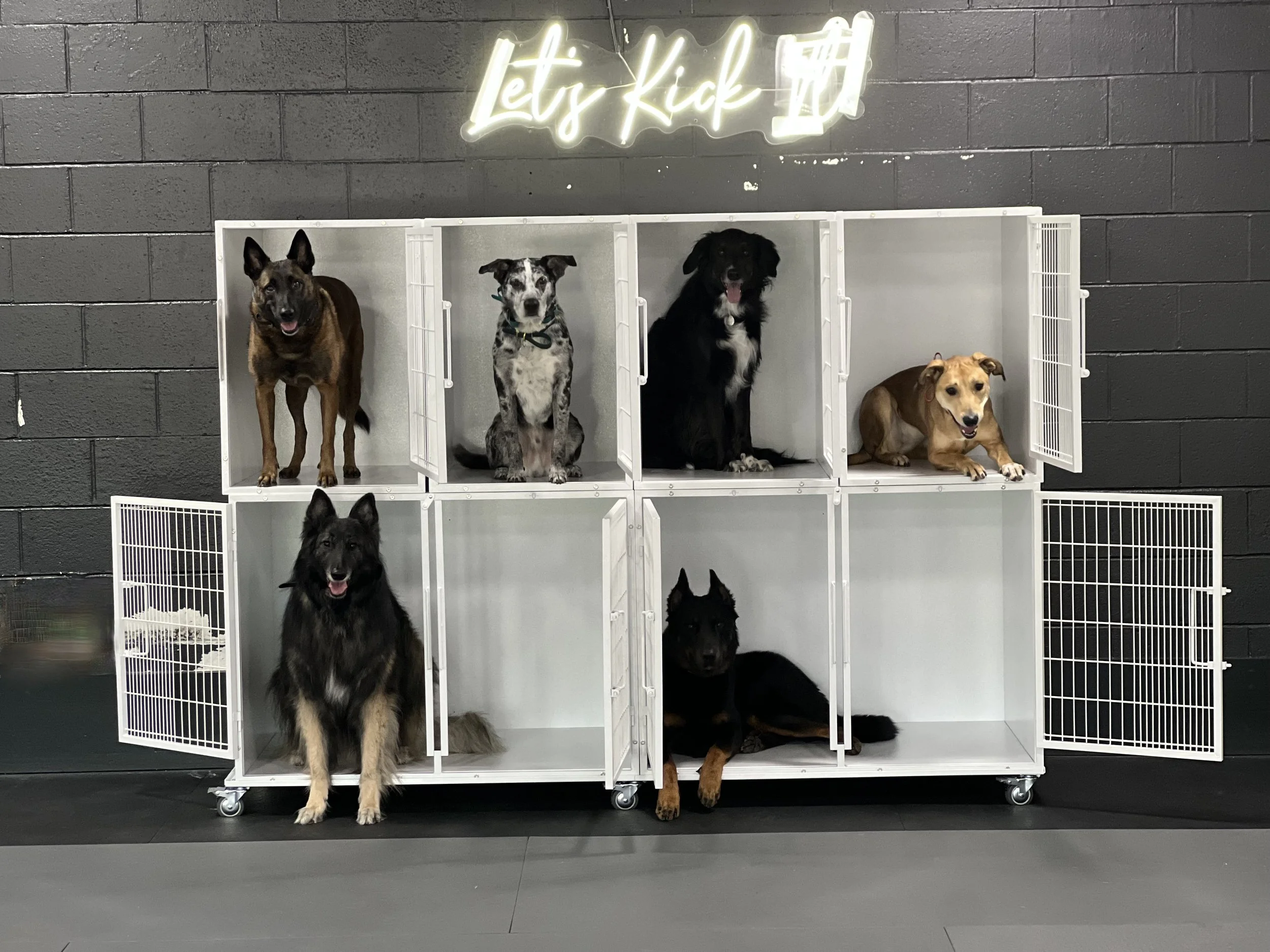The Crate Is Great: A Guide to Kennel Training Your Dog
Kennel training, often called crate training, sometimes gets a bad rap—but when done correctly, it’s one of the most effective tools for building a balanced and secure home life for your dog. Think of a crate not as confinement, but as a safe haven—a place your dog can relax, recharge, and feel secure. Whether you’re working with a new puppy, a rescue, or an adult dog, kennel training can make a big difference in behavior, stress levels, and even your relationship.
Why Kennel Training is Beneficial
1. Creates a Safe Space
Dogs are natural den animals. A crate taps into this instinct, giving your dog a personal retreat. When introduced properly, many dogs seek out their crates for rest and relaxation. It's a place that’s theirs—where no one bothers them, and they can decompress.
2. Aids in House Training
One of the biggest advantages for puppy parents: crate training helps immensely with potty training. Most dogs naturally avoid soiling their sleeping areas, so a properly sized crate encourages bladder control and helps set up a potty schedule.
3. Prevents Destructive Behavior
Whether it’s chewing shoes or raiding the trash, unsupervised dogs can get into trouble. A crate keeps your dog safe—and your home intact—while you're away or busy. It also helps dogs learn to settle down instead of acting out of boredom or anxiety.
4. Builds Routine and Structure
Dogs thrive on predictability. Incorporating crate time into your daily rhythm teaches your dog when to rest, when to play, and when to engage. This kind of structure is especially comforting for anxious or overstimulated dogs.
5. Reduces Separation Anxiety
When introduced from the start, the crate becomes a calm and familiar space your dog can enjoy—even when you’re not home. It teaches them that being alone isn’t scary; it’s just part of the day.
6. Makes Travel and Vet Visits Easier
If your dog is already comfortable in a crate, car travel, overnight stays, and vet visits become far less stressful. Kennel-trained dogs are also easier to care for in emergencies or when staying with sitters.
How to Properly Kennel Train Your Dog
Step 1: Choose the Right Crate
The crate should be large enough for your dog to stand up, turn around, and lie down comfortably—but not so large that they can potty in one corner and sleep in another. For growing puppies, consider a crate with a divider.
Step 2: Make it Inviting
Place the crate in a calm, central part of your home. Add a soft bed, a favorite toy (We do not suggest leaving your dog unattended with stuffed toys. They can be ripped and ingested resulting in a pricey vet bill, or other unfortunate consequences.), and maybe even an item with your scent. Leave the door open so your dog can explore it without pressure.
Step 3: Start Kenneling Right Away
Beginning your journey with your new dog or puppy, by immediately starting a crate routine, helps set immediate boundaries, and routine for your dog. This is a great idea for puppies because it diminishes the probability of picking up bad habits around the house. It's great for new adult dogs because new spaces can be overwhelming causing your dog to lash out. Giving them a space to get away from the bombardment of new stimuli, will help them settle in faster, and build a trusting relationship with their new people.
Step 4: Create Positive Associations
Feed meals in the crate, offer special chews or puzzle toys during crate time, and always reward calm behavior. The crate should be a place of good things—not stress.
Step 5: Create A Plan
For new dogs and puppies we like to utilize the: Kennel, Potty, Work, Play method. If you cannot keep an eye on your dog the kennel is the safest least stressful space to keep your pup. When you remove your dog from the kennel, immediately give them an opportunity to use the bathroom. Make sure to walk them out on a leash or if they're small enough, carry them out to prevent any inside messes. Once they've eliminated, you can start a training session (make sure to use their kibble to reinforce behaviors you want). Once they've finished their training session, have a play session with them! Play tug, throw the ball, have some snuggle time! Back out to potty, and then back to the kennel for a nap. Then repeat the process. As time progresses you can offer your dog more freedom.
Step 6: Stay Consistent
Consistency is key. Use the crate at regular times and keep the routine predictable. If your dog whines, avoid letting them out right away unless you're sure they need to potty. Reward calm behavior, not fussing.
Crate training isn’t about control—it’s about comfort. When done thoughtfully and patiently, it becomes a gift to your dog: a space of their own where they feel safe, respected, and secure. And for you, it brings peace of mind, a tidier home, and a dog who understands boundaries with confidence.
So go ahead—give the crate a chance. You might be surprised by how much your dog learns to love it. If you find you're having trouble with kennel training, give The Cordial Canine a call, or send an email! We'll get back to you as soon as possible! Happy training!


